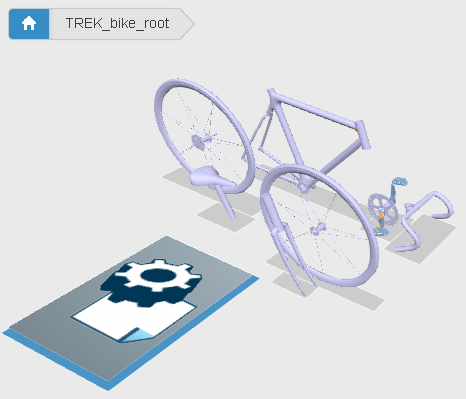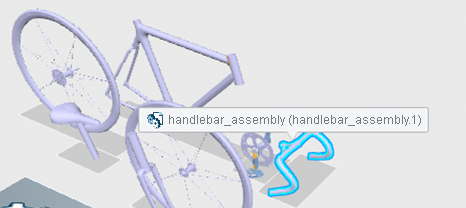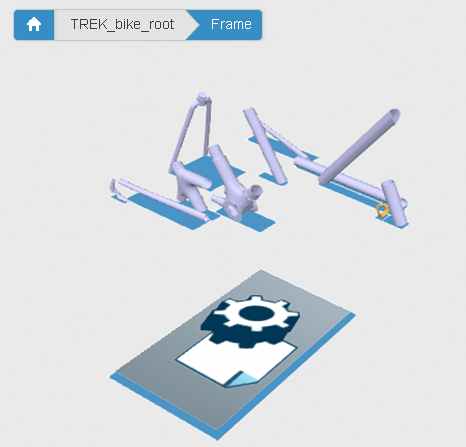Navigating the Structure | ||
| ||
-
From the
standard area
of the
action bar,
click
Edit Structure
 .
.
- If there are several product structures currently loaded, they are aligned.
- If there is only one product structure, it is automatically exploded at the first level.

The explode operation is laying the components of the product structure parallel to the ground, not always in the same way you would place them manually in the most stable position. Their orientation is not modified to ease the understanding of the exploded view of the assembly. It also brings more stability on the screen while navigating deep in the product structure. The presentation reflects the selected components:- Product components appear on a gray tray. You can explore them further down.
- 3D Representation components appear on a blue tray.
- Components with no associated geometry underneath are identified by default icons over the tray.
- A tooltip that contains the icon type, the reference name, and the instance name (when relevant) is displayed when you hover over a component.

A bar composed of buttons allows you to navigate the product structure level by level. Each button represents a level of the product structure. Two context menus are available to adjust the background visualization and model display. For more information, see Context Menus.
Notes: The Hide/Show mode in the product structure is available while the Structure mode is turned on. When you click Visible / Invisible space from the
View section of the
action bar:
from the
View section of the
action bar:
- Elements which do not belong to the current level are not displayed in the visible and invisible spaces.
- Filtered elements with tags provided by the ENOVIA Product Structure Editor widget are not displayed in the visible and invisible spaces.
- Trays are displayed in the visible and invisible spaces, for levels having geometry in these spaces. Their layout and size are computed according to the bounding boxes of the elements which are displayed in the current space.
- When a sub-element of the current level has no representation in a space, its corresponding tray is not displayed.
-
To explore the structure of a component (in our example, the
frame), do either of the following:
- Double-click the component.
The selected component is used as reference element for the explode operation.
- Left-click it and select
Edit Structure.
When there is a single root in session, the first level of this product is automatically exploded, taking the largest component as a reference for sub-component positioning. Further navigation is then possible by double-clicking the sub-component to be used as reference.

- Double-click the component.
- Optional:
Navigate the structure using the navigation bar.
Alternatively, you can navigate using the arrow keys: Up, Down, Right and Left arrows.Note: Any modification of the structure recomputes the explode operation.
-
Click
Exit Structure
 .
This is the only way to exit the Structure mode.
.
This is the only way to exit the Structure mode.